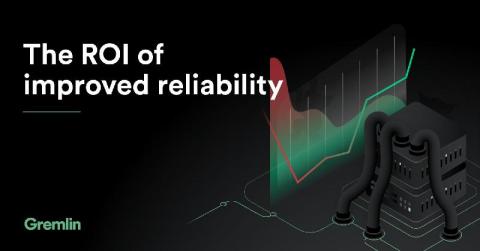Operations | Monitoring | ITSM | DevOps | Cloud
Chaos Engineering
Don't Just React to Incidents-Prevent Them
Incident response has been the cornerstone of reliability for decades. From digging in the server logs to navigating modern observability dashboards, responding quickly to incidents and outages is a big part of minimizing downtime. And it should be! When something breaks, your team should move as quickly as possible to address and repair the problem.
Chaos Engineering Tools: Myth vs Fact
With so many Chaos Engineering tools available, it’s no surprise that SRE and platform leaders are doing their homework when choosing a platform to help them build and scale their Chaos Engineering programs. But like anything else you can research on the internet, there’s a lot of noise and hype that you need to wade through. Gremlin works with Reliability Engineering teams at hundreds of companies with the most sensitive workloads—and has since 2016.
What is Gremlin?
Five Trends from SREcon Americas 2023
Last week, over five hundred SREs gathered in Santa Clara to share the latest research, tips, tricks, best practices, and more for site reliability engineering. They were joined by some of the biggest names in the reliability space. And, yes, Gremlin was there to answer any and all questions about chaos engineering and proactive reliability. After three days of great conversations and insightful talk, let’s take a look at some of the themes we heard weaving through SRECon.
How Gremlin helps you meet Google's Infrastructure Reliability standards
In January of 2023, Google released its infrastructure reliability guide, which provides guidelines on how to build high-availability applications in Google Cloud. While it's written for Google Cloud, it provides some excellent general-purpose information on how to architect reliable applications on any cloud provider, including: In this blog, we'll explain each of these factors and how you can use Gremlin to ensure you're meeting your reliability requirements.
Testing doesn't stop at staging
Imagine a perfect world where software releases ship bug-free. Developers write perfect code the first time, all tests pass without issues, operations teams effortlessly deploy builds to production, and customers never experience defects. Everyone's happy, and the Engineering team can focus exclusively on building and delivering features. Of course, we don't live in a perfect world.
The KPIs of improved reliability
For many businesses, prioritizing reliability is an ongoing challenge. Building reliable systems and services is critical for growing revenue and customer trust, but other initiatives—like building new products and features—often take precedence since they provide a clearer and more immediate return. That's not to say reliability doesn't have clear value, but proving this value to business leaders can be tricky.
How to test for expired TLS/SSL certificates using Gremlin
Transport Layer Security (TLS), and its preceding protocol, Secure Sockets Layer (SSL), are essential to the modern Internet. Encrypting network communications using TLS protects users and organizations from publicly exposing in-transit data to third parties. This is especially important for the web, where TLS secures HTTP traffic (HTTPS) between backend servers and customers’ browsers.










